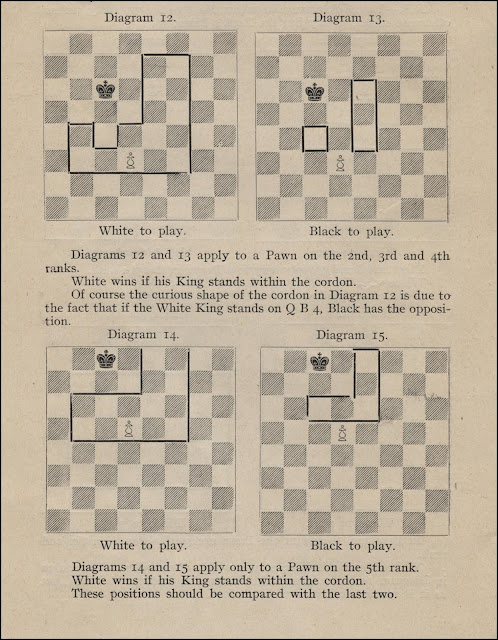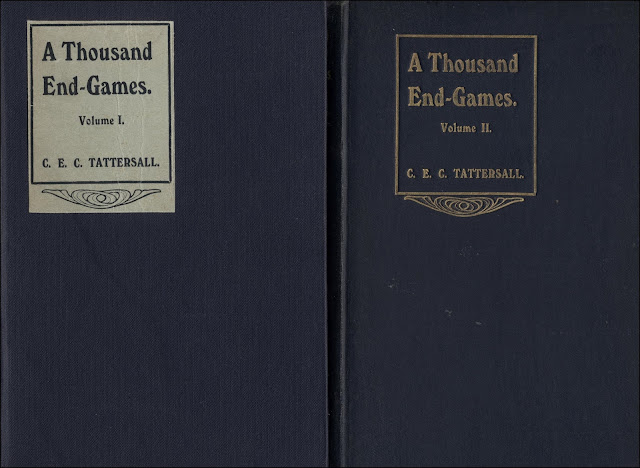Section 22 of Betts' Chess Bibliography covers specific types of the end-game and has just three entries:
22-1 Analysis of the Chess Ending, King and Queen against King and Rook, by Euclid (Alfred Crosskill), London 1895.
22-3 Collection of Chess Studies, by A. A. Troitzky, Leeds 1937, which includes a 61 page supplement on the theory of the end-game of two knights against pawns.
and 22-2 Notes on the End-Game. Part I. King and Pawn against King, by C. E. C. Tattersall, Leeds 1915.
Tattersall's work is a small pamphlet of 24 pages, re-printed from The British Chess Magazine (April and May 1915), in which he tackles this seemingly simple end-game in a very unusual manner, with the aim of calculating the mathematical probability of any legal position of K+p v K being a win or draw with best play.
Pages 4 to 14 explain in great detail the methods of play for both sides in K+p v K endings, with the help of many useful diagrams.
On pages 15 to 24 Tattersall moves on to calculate the chances of a forced win or draw for any random legal position of K+p v K. For convenience the author has called the stronger force White and, using some clever methodology and straight forward arithmetic, he calculates that there are 330,576 such legal positions, of which White wins 76.47% with the move, but only 58.35% if Black moves first. Black's chances of drawing nearly double with the move.
Tattersall then breaks down his analysis to show the chances of a win for various positions of the Black king, and various positions of the White pawn, with some interesting, but generally predictable, results. Black's best drawing chances arise when his king is on the 6th or 7th ranks of the centre files, and White's winning chances increase the further forward his pawn starts.
Furthermore, a White pawn on the second rank is better situated than one on the third rank, unless it is a rook's pawn, and a pawn on the knight's file is slightly more advantageous than a pawn on any other file.
Furthermore, a White pawn on the second rank is better situated than one on the third rank, unless it is a rook's pawn, and a pawn on the knight's file is slightly more advantageous than a pawn on any other file.
Tattersall's calculations and statistics are fascinating to some but leave others cold, and perhaps the latter prevailed as no additional pamphlets in this series appeared, despite the hopes expressed in his Preface that others would follow dealing with further aspects of the end-game.












No comments:
Post a Comment